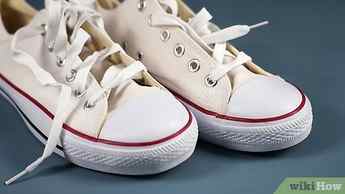9 Types of Printmaking You Need to Know
Printmaking is believed to have originated as early as the 1st century AD during China’s Han Dynasty, and since its start, the medium’s ability to reproduce images and create unique visual qualities has influenced everyone from book publishers to graphic designers. Artists in particular have driven the medium forward by experimenting with its various processes, in which ink is moved from one surface to another. Below, we outline nine of the most widely used printmaking techniques, and how they work.
Katsushika Hokusai
The Great Wave off Kanagawa (Kanagawa oki nami ura), from the series “Thirty-six Views of Mount Fuji” (“Fugaku Sanjurokkei”), 1830 -1833
Art Institute of Chicago
Woodcuts became one “of the great forces which were to transform mediaeval into modern life,” as George E. Woodberry wrote in his 1883 book History of the Wood Engraving. As the author noted, woodcuts not only revolutionized printmaking processes, but also people’s ability to access literature and art.
By the 15th century, people had started using the technique to print multiples of texts and images. The process of carving out every letter of a book from a block of wood, however, was a grueling task, so only popular works, such as the Bible and Buddhist sutras, were chosen for this type of reproduction. Prior to these woodcuts, books were almost exclusively available to wealthy and royal individuals––so once texts and images hit the printing press, they became more common goods.
While the woodcut technique first became popular for its practical uses, such as printing books and decorating textiles, it eventually became an art form of its own. Woodcuts are a subset of relief printmaking—where you carve out negative space from a surface, leaving only the lines and shapes that you want to appear in the print. For example, an artist making a woodcut will carve into the surface of a piece of wood, then coat the remaining surface with ink. Next, they’ll typically place the inked surface on a piece of paper, and finally, they’ll create their print by placing pressure on the back of their block––with a roller, printing press, or other tool––to transfer the ink onto the page.
To alter the surface of a block of wood, many artists use special knives and other tools, such as gauges, to carve in the direction of the wood’s grain. One feature that sets woodcuts apart from other printmaking techniques is the residual wood grain texture the block leaves behind.
Woodblock printing utilizes a similar process; the main difference between woodblock prints and woodcuts is that the former uses water-based inks, which allow for more sensitive washes of color, and the latter uses oil-based inks. Japanese artists were using woodblocks to create ukiyo-e prints in the mid-17th century. Ukiyo translates to “floating world” in Japanese, and in these prints, flowers, wrestlers, women, mountains, and other subjects were rendered with flattened planes of color, hovering in the composition.
How to etch an image onto a canvas
PHOTOS ▼
PRINTING SERVICES ▼
Printing Services
Printing Services
Photo Gift Prints
Fine Art quality Printing
using Epson Inkjet printers & UltraChrome K3 inks
PICTURE FRAMING ▼
Custom-made Frames
Mats, Plexis & more
Custom-mades.
ART SUPPLIES ▼
Readymade
Custom Made
SERVICES ▼
Services
Digital Effects
PROS ▼
CONTACT US ▼









Pages: 1 2 3 4 5 6 7 Next
Canada Giclee On Canvas, Fine Art Printing – Art Scanning & Reproductions – Handmade Oil Paintings – Custom Wood Panels, Metal Picture Framing – Block/Plaque Mountings, Large Format Dry Mounting & Lamination – Art Supplies: Stretcher Bars, Cradled Wood Panels and Artist Canvas – Collages On Canvas – Plexi/Acrylic Face Mounts – Block Acrylics, Fabric Printing, Dye Sublimation – Cityscape Skyline Prints, Resin, Photo Gifts and more.





